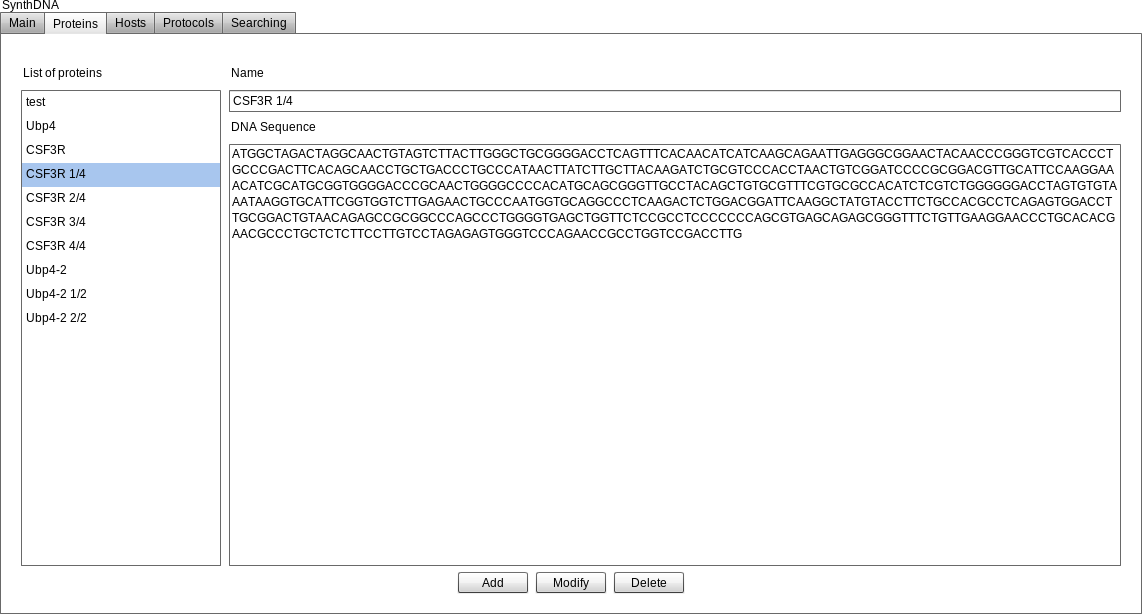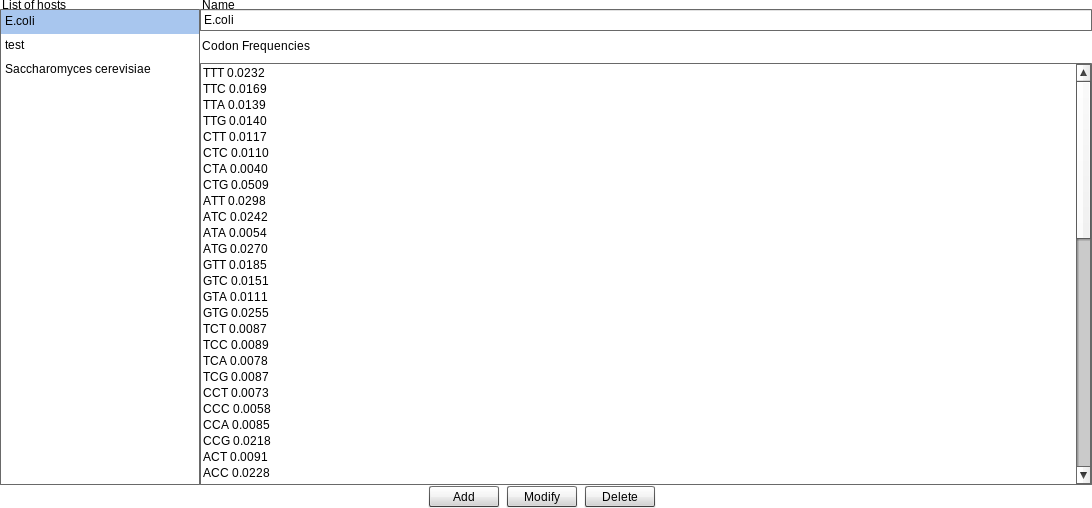
This computer program calculates optimal nucleotide sequences and the protocol (either one-tube or many-tube reactions) to produce artificial gene. The input is a DNA sequence coding peptide and codon frequency for a given host organism. The application uses web browser to communicate with the user. User interface is organized as a set of tabs that allow for managing sequences, codon frequencies, parameters of the algorithm and calculation results.
The window designed to add, modify and delete peptide sequences is depicted in Fig. 4. The peptide is represented as the DNA sequences, the possibility to use the amino acid sequences is planned in the next release. The window to manage the host codon frequency is depicted in Fig. 5. There are functions to add, modify and delete hosts stored in internal database. The codon frequency is checked for proper values, e.g. sum of frequencies of codons for the same amiono acid is one. The import from external databases is planned.
Fig. 4 Graphics user interface of DnaSynth, proteins management window

Fig. 5 Graphics user interface of DnaSynth, hosts management window

The algorithm parameters with input data is called the task. The task definition includes the peptide sequence, the host, the minimum and maximum DNA oligonucleotide length, the weights in multi-criteria optimization and evolution algorithm parameters. The window to input settings for a tasks is depicted in Fig. 6. The input sequence and the host are chosen from data stored in the internal database. The user defines constraints for the outcome, i.e. the minimum and maximum output oligonucleotide lengths and the optimisation criteria weights. For example, when nucletides number is not important the corresponding weight is to be set to 0. The possibility to disable codon substitution, important for build non-coding DNA sequences, is planned in the next version of DnaSynth. The evolutionary algorithm parameters decide how many the calculations are carried out. The user can adjust the result with a local search algorithm.
Fig. 6 Graphics user interface of DnaSynth, algorithm parameters

Fig. 7 Graphics user interface of DnaSynth, calculation results

Many tasks can be executed at the same time simultaneously, and progress is displeyed for each. The results are shown in window depicted in Fig. 7. Results include a set of tubes, where each tube is a set of oligonucleotides.